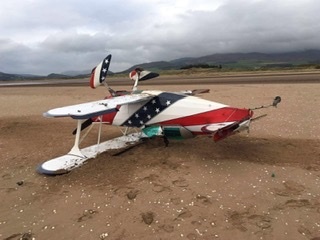BTW there’s not much difference between 500 and 200 feet AGL on approach in case of engine failure if you don’t have BRS – you’re probably best continuing straight ahead.
And the same if you have it. <500‘ is too low..
challenge with the stats is that they are good only if you have many lifes, and if one is lost then you just use the next one.
In that case best to never fly at all, especially not SE. There are many airports with approach and departure paths where an engine failure would land you into a house or something like that.
We have to take chances on that…
arj1 wrote:
Peter, challenge with the stats is that they are good only if you have many lifes, and if one is lost then you just use the next one. :)
With that reasoning you couldn’t do anything in your life, since anything you do carries with it a risk of accident and death.
I don’t disagree at all that if you have CAPS it makes sense to use it in an emergency, but I do take issue with the hypothesis that landing without CAPS anywhere but a big flat hard field is “certain death”.
We’ve all heard of folk who have killed themselves flying into trees and mountains, but my point is that the outcome of such a manoeuvre is something over which we do have a large measure of control. Here’s a typical forest landing from which the sole occupant walked without the slightest injury:

Here’s an upset on soft ground (or maybe just a Pitts driver unaccustomed to keeping the rubber side down  ), also without injury:
), also without injury:

The essential point is not that these airplanes stall at less than 70 knots (although that surely helps) but rather that the pilot didn’t fret about finding a “nice” place to land. Just level the wings (preferably the right way up!) set full flap and plonk it down fully stalled in ground effect.
Believing that it is necessary to select a “nice” landing site is likely to be counterproductive.
The above fully stalled landing on a slope is by no means unusual or limited to special aeroplanes. Any C1xx can do the same and a Swiss friend regularly does so in his C175. Even in a Cirrus or Socata rocket ship, if you flare aggressively from a steep, stable glidepath the airplane will slow down so much that it quits flying and you lose control. If you time the flare so that happens in ground effect, the result should be no worse than a CAPS landing.
Snoopy wrote:
Again, not talking about an engine failure precisely at 200ft. What do you do if in IMC and the engine fails at 3000ft, and it is IMC down to 002?
Following this logic, SEP isn’t VFR machine because OVC050 or even BKN050 presents the same threat. And I believe any of us IFR rated pilots would fly e.g. at 9000 feet in clear sky with OVC050 below. Otherwise, what’s the point of IFR in SEP?
OVC050 doesn’t matter. OVC050 to OVC002 during an approach does.
Why did you switch from SEP to MEP? :)
IFR → traffic, airspace, obstacle clearance.
IMC → different story.
Peter wrote:
challenge with the stats is that they are good only if you have many lifes, and if one is lost then you just use the next one.In that case best to never fly at all, especially not SE. There are many airports with approach and departure paths where an engine failure would land you into a house or something like that.
We have to take chances on that…
That is true as well. Just like we have to take chance for night flying in SEP or over open water when not in gliding distance…
Snoopy wrote:
Why did you switch from SEP to MEP? :)
 That’s obvious because of increased safety. But I fly a lot across open water, very often distances exceeding 300 or 400 NM which was primary reason for MEP.
That’s obvious because of increased safety. But I fly a lot across open water, very often distances exceeding 300 or 400 NM which was primary reason for MEP.
Risk is just part of flying. Personally I don’t think I have a higher risk flying a DA40 vs. a Cirrus. Obviously the risk profiles are a bit different. Cirrus I fly at night and (mild) IMC. DA40 by day and (very mild) IMC. DA40 seems easier, more benign to fly.
My philosophy is with Jacko.